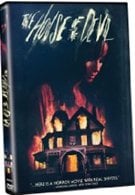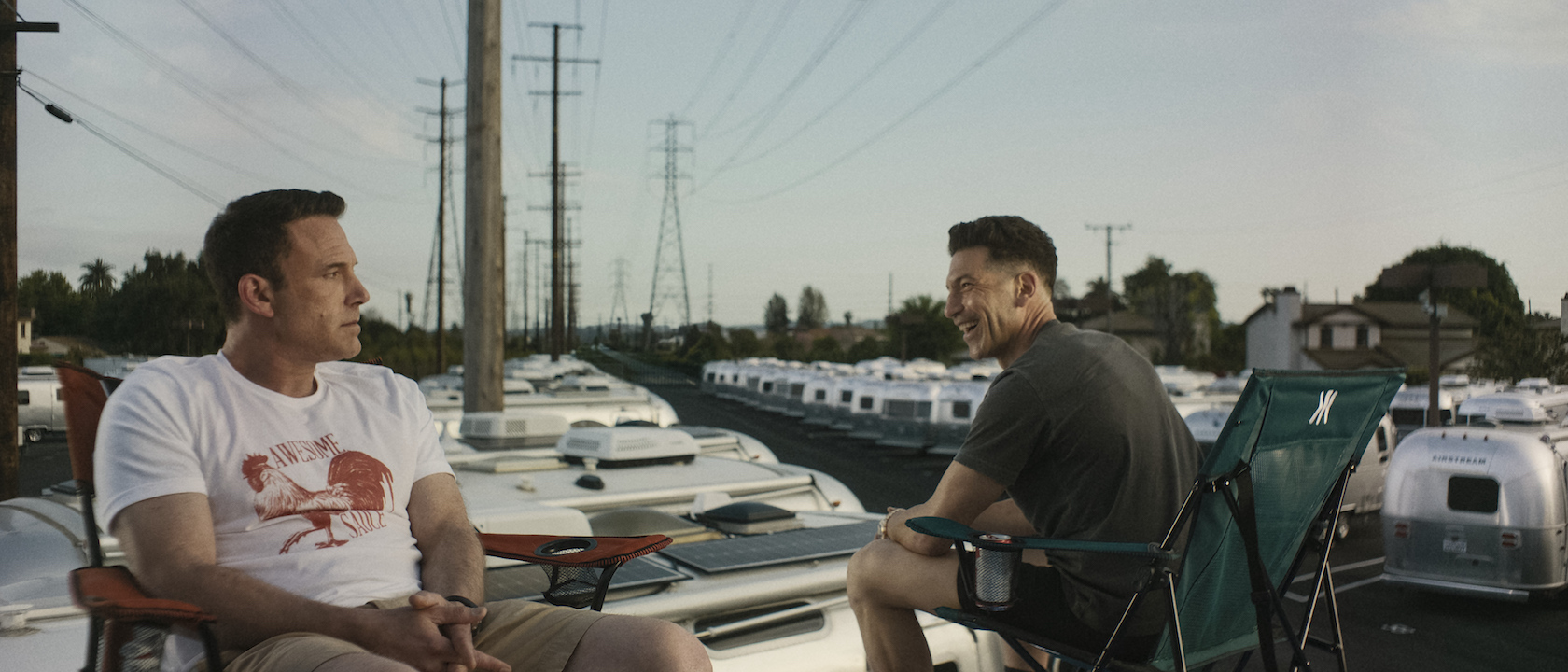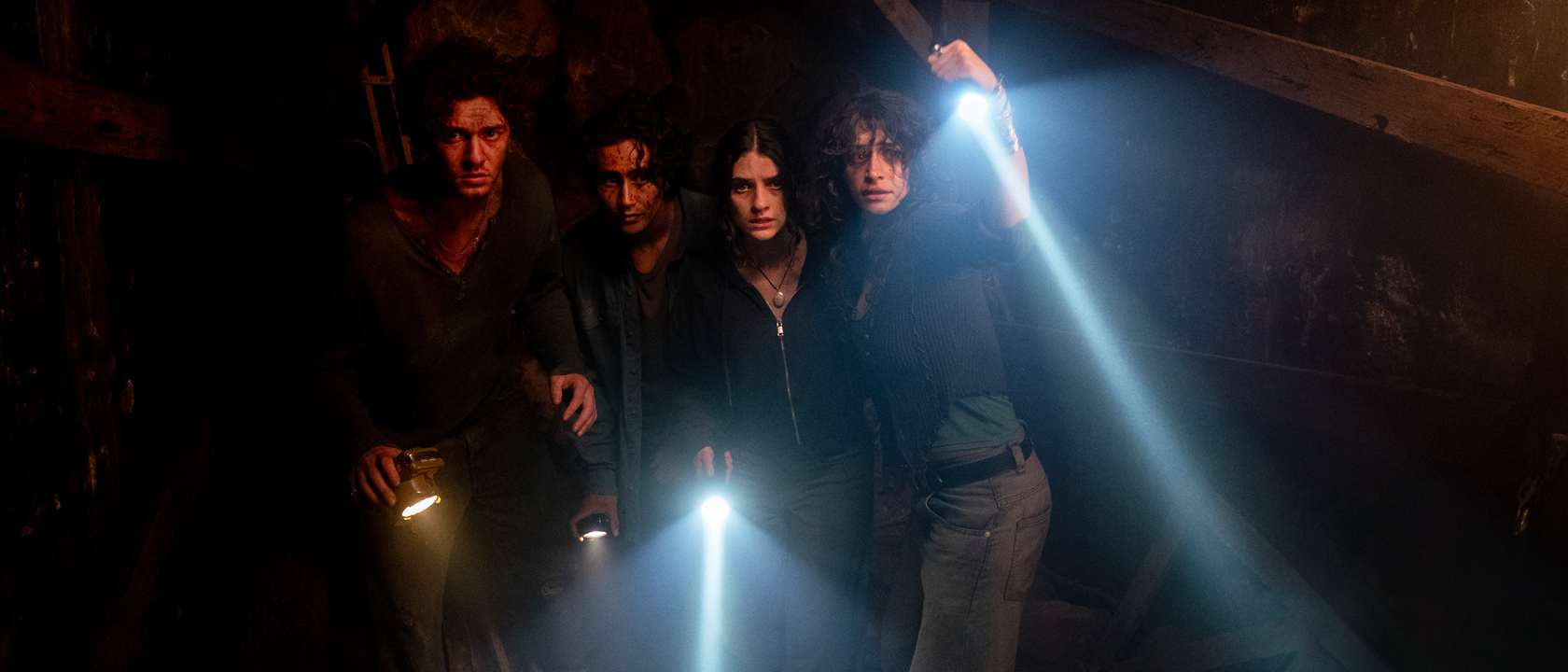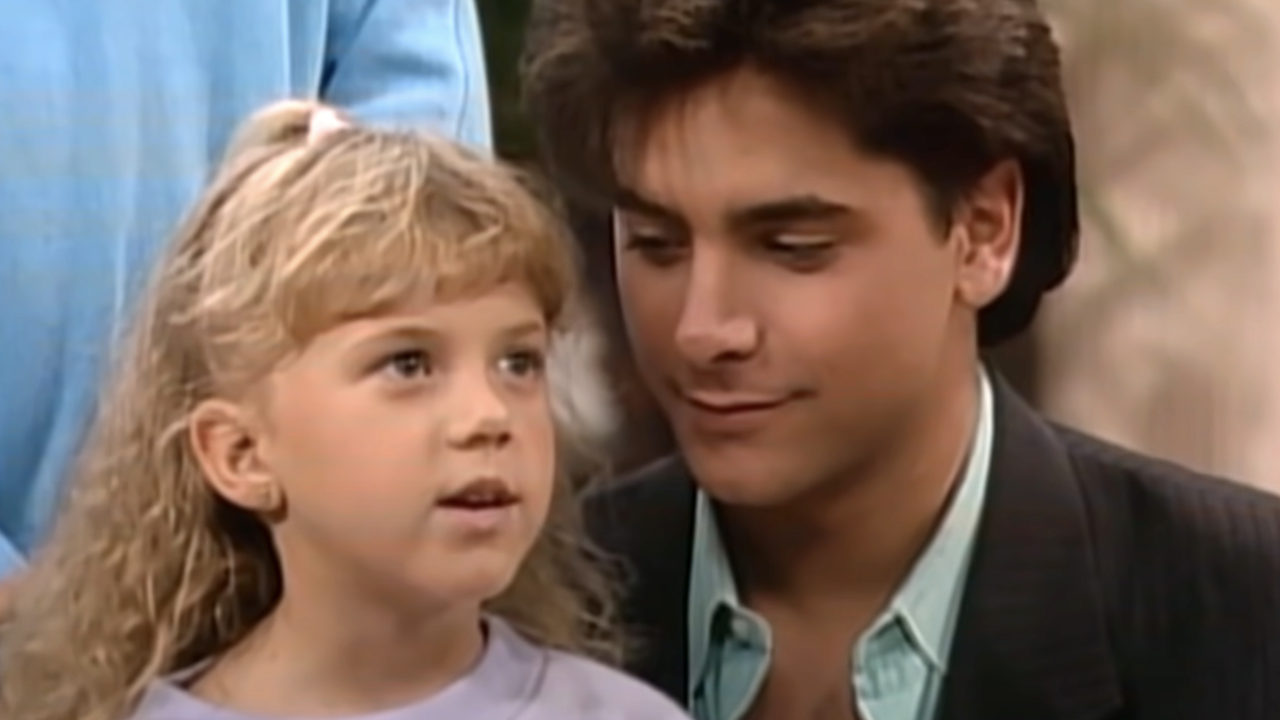The films of Val Lewton are praised primarily for their suggestive and psychological approach to horror, but this misses a more subtle, vital element. Instead of starting immediately in the middle of a distressing scenario, Lewton would begin with characters engaged in the familiar and everyday world full of its mundane problems. The horror would then be let in like a thief through the back door and slowly make its presence known as the film unwound. It's this approach that distinguishes Ti West's The House of the Devil as well, and goes a long way to making it, without a doubt, the best horror film of 2009. Set sometime in the early '80s, the film begins as a low-key character drama about a young college student named Samantha (Jocelin Donahue), strapped for cash and looking for a place to live. This could be the beginning of any random ABC Afterschool Special in which a desperate young girl finds herself in trouble when faced with some tough decisions. But the film switches gears softly as she takes a mysterious babysitting gig at an old, dark house and slowly realizes that her employers have more sinister plans for her. Though they are childless, it just might involve a baby and, oh yes, the coming lunar eclipse.
There's nothing particularly original about the plot synopsis above, but the cinematic approach is very original and specific. That's what this film, and indeed, what Ti West as a filmmaker, has been about. If you've seen his excellent 2007 film Trigger Man, this film's pacing and style will be familiar to you. It's a variation on what Gus Van Sant has been doing for the last several years with films like Gerry and Last Days, stripping character and narrative down to the most basic requirements and focusing instead on observation in real time. It's a bold and confident conceptual aesthetic that defines an auteurist approach to horror filmmaking.
Of course, West's idea of a horror film may not be for all tastes. Those looking for an experience like The Evil Dead may just want to look elsewhere or learn to expand their cultural horizons a bit. What West does is make a film that is largely "about" minimalist observation and slow-burning suspense. A large portion of this film is "just" watching Samantha on her tour of the old house. But this is done in a very Hitchcockian way, as small details she discovers begin to paint a bigger picture of what exactly is going on around her. In a film like this, the smallest choices are sometimes the most significant. In what seems to be just a stylistic nod to the opening of The Texas Chainsaw Massacre (minus the John Larroquette narration), West opens the film with a series of text statistics about Satanism and the occult. But it functions as a narrative device as well. This brief text prologue, along with the fact that the film is called The House of the Devil, acts as a kind of ominous cloud over the film's first hour. It seems to say that, "Everything seems to be ordinary and safe, but just you wait..."
By trading in loud and increasingly low-dividend "shocks" for well-earned dread and fear, West immerses the audience in a genuine shared experience. This is what cinema can do better than any other art form. Placing the audience in the shoes of its characters so it becomes not a second-hand telling as a book might be but as close an experience to "being there" as possible. "Being there" in this film's final half hour is not something you will easily forget. When the horror is finally let loose, it is about as frightening and brutal as anything you've seen and all the more effective for the extended buildup of the first hour.
The cast is made up of new faces (Donahue), genre staples (Noonan, Woronov, Wallace), and an indie star (Greta Gerwig). Each contributes a strong performance that works in concert with the others. This is important to the film's overall effect since the minimal style requires all notes to be played correctly in order to work.
The House of the Devil is an anomaly in today's horror film landscape. Despite the '80s setting, it's not ironic, not really meant to be a specific homage to anything in particular, isn't tongue in cheek, and is not a contemporary confetti of images. This isn't meant to be some half-ass "dance on the grave" of some old films. The period setting is used as a stylistic tip of the hat to the films of the period, as a kind of sense memory device for fans of the genre. For those who pick up on these details, it sets a certain mood very effectively. West gets the details just right, from the yellow credits (complete with Roman-numeral copyright), which remind you instantly of the old "Titles by Universal Title", to the rotary phones in kitchens with cords long enough to stretch into the next room. Probably the best thing that can be said for most of these details, however, is that the film would be almost as effective if they were removed from the film entirely. West is skilled enough that his control over the storytelling can stand alone. Many filmmakers today do not seem to be concerned about the motivations of framing and editing, but for West this seems to be second nature. Unless you were one of the lucky ones to receive the special VHS version of the film (which is supposedly 4:3 pan and scan with a stereo 2.0 soundtrack), the standard definition DVD is presented in its original 1.66:1 aspect ratio and with a Dolby 5.1 soundtrack. Since the film was intended to capture the look of a low-budget film made in the early '80s, it was shot on 16mm film. The image quality might not be as crisp as Avatar. Suffice to say, it looks appropriately great and sounds even better.
The DVD is filled with extras that any fan would appreciate, including two separate commentary tracks. The first is by writer-director-editor Ti West and star Jocelin Donahue. West talks to her about her preparations for the role, learning to dance to the Fixx's cryptic song, "One Thing Leads to Another" and '80s blue jeans. The second audio commentary track features Ti West, along with producers Larry Fessenden (a GREAT filmmaker and patron of indie horror filmmaking) Peter Phok, and sound designer/collaborator Graham Reznick. This commentary could be titled Things Larry Fessenden Loves about The House of the Devil -- it's a great, fun discussion among the primary creative team that covers all aspects of the production and is enlivened by Fessenden's mischievous comments on the film and what he loves about it, his favorite shot, sequence, costume etc. Graham Reznick comments that "all the great films are mysteries," and I don't know if that isn't the best description for what storytelling in film is all about. The one flaw in this great track is that some voices that are loud and clear while others require you to turn up the volume.
There are also two brief featurettes: the five-minute "Behind The House of the Devil," which features cast and crew talking about the film's realistic approach to horror and the film's satanic scare background; and the 14-minute "In The House of the Devil," which is what I wish all films would include: a simple collection of behind-the-scenes footage unadorned by talking-head interviews and narration. It lets us see how much work went into transforming the house for an '80s look, putting up new wallpaper in the house and even vinyl flooring. This is the best kind of behind-the-scenes documentary as it just allows you to have a fly-on-the-wall peek at the production of the movie.
Also included are the film's well-edited trailer and three deleted scenes, two of which are two sides of the same phone conversation. None are missed in the final film.
Although I said that the '80s setting was not important, I must admit that I loved the giant Coca-Cola cups (available on eBay) and the large slices of pizza that Samantha eats with her ill-fated friend, Megan (Greta Gerwig). That would make a nice '80s meal to accompany this film at home on DVD. This disc is highly recommended.
Full House's Jodie Sweetin And Andrea Barber Address 'Weird Question' They're Often Asked About Co-Star John Stamos, And It Sounds Like Fans Think the Tanners Are The Brady Bunch
Bill Belichick's Girlfriend Totally Shut Down An Interview Question About Their Relationship, And Now Fans Are Making Their Own Assumptions
What’s It Like Hanging Out With Tom Cruise And Shooting The Breeze About Top Gun? A Sportscar Expert Has A Fun And Surreal Story











